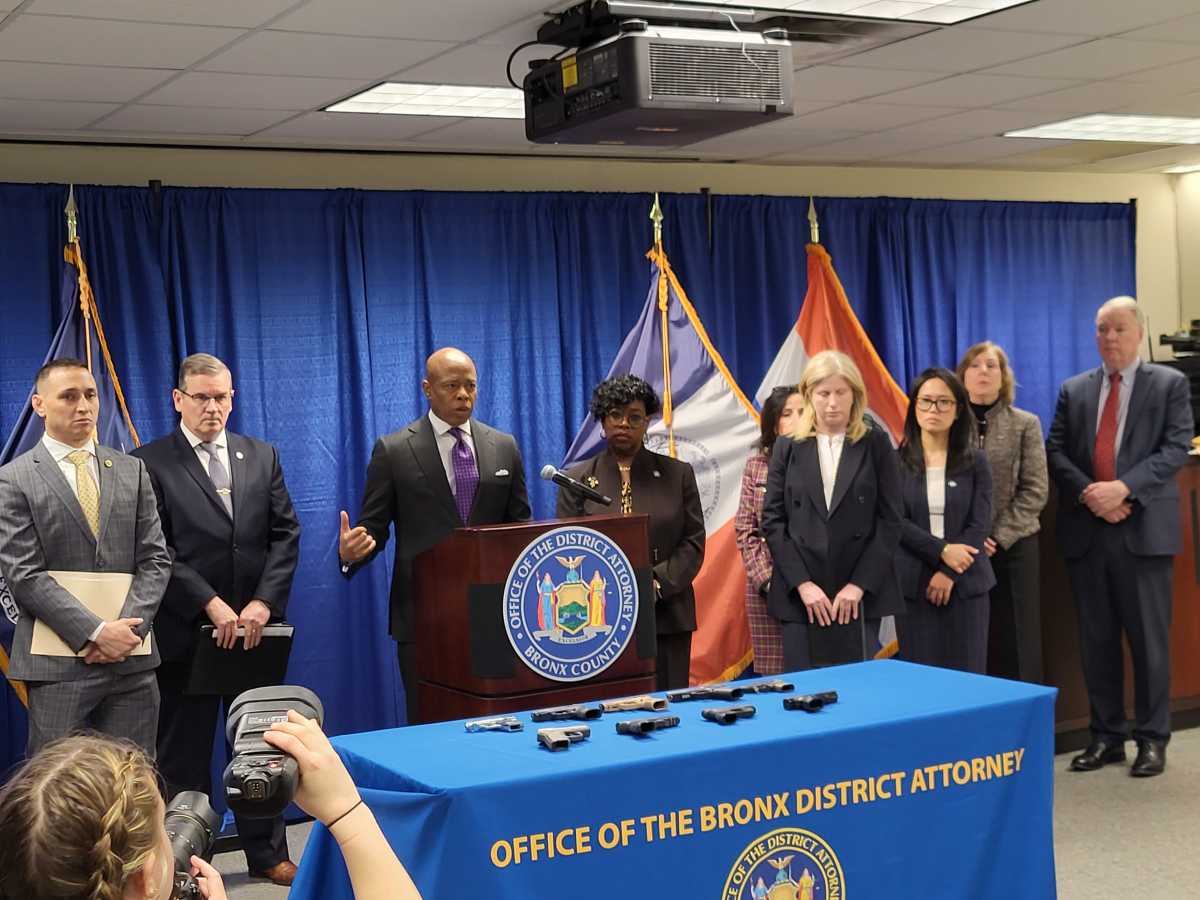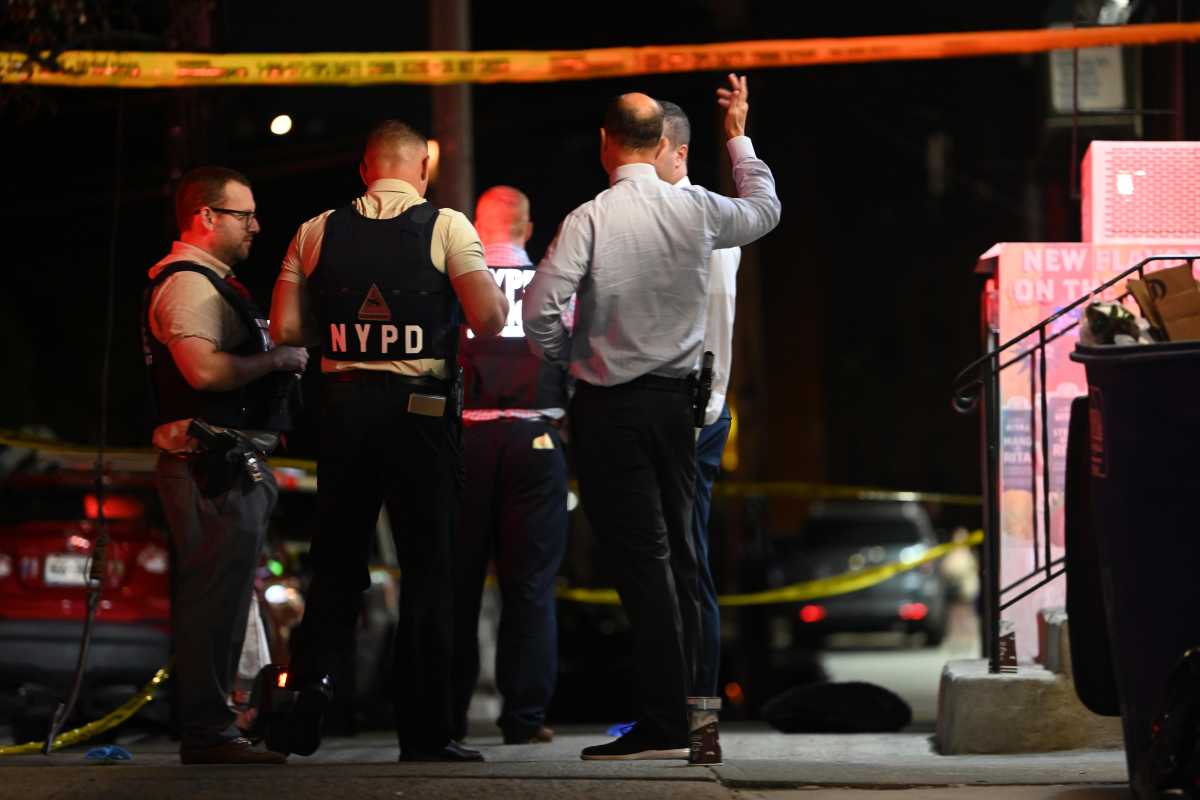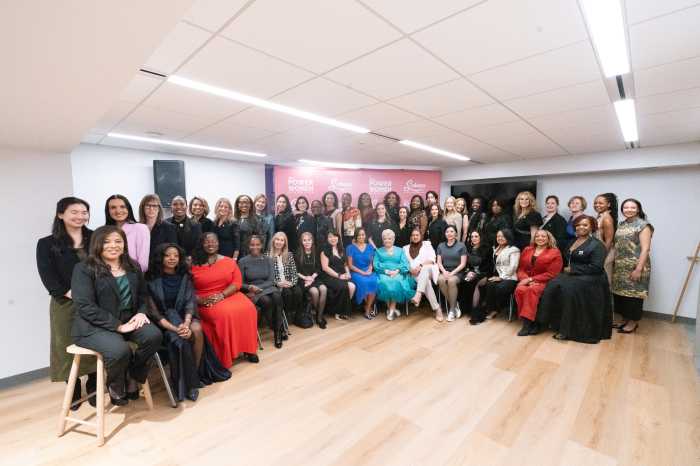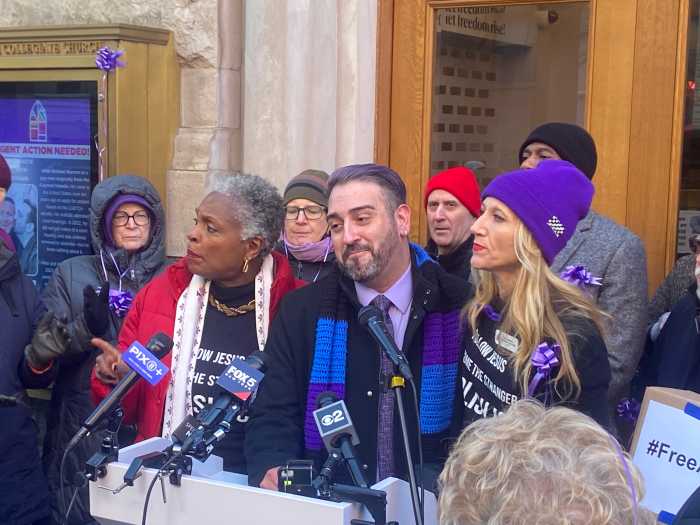NYPD staffing levels have plunged by as much as 35% across key precincts in western Manhattan since 2019, according to new figures released by City Council Member Erik Bottcher, who is urging Mayor Eric Adams and NYPD Commissioner Jessica Tisch to restore officer headcount to pre-pandemic levels.
In a letter sent April 17, Bottcher cited dramatic declines over the last six years: the 6th Precinct, which covers Greenwich Village, lost 52 officers — a 35% reduction. The 10th Precinct in Chelsea dropped by 33%, from 142 officers to 95. Midtown South’s headcount fell 27%, and Midtown North dropped by more than 40%, shrinking from 251 to 147 officers.
“This reduction in staffing has made it more difficult for precincts to: Respond quickly to ‘lower-priority’ 911 calls, such as retail theft; Assign officers to engage with the community while walking the beat positively; Prevent burnout and overreliance on overtime; Deliver the kind of neighborhood-focused service that New Yorkers expect and deserve,” Bottcher wrote.
The Council Member emphasized that residents are not seeking more aggressive enforcement but steady, visible coverage in residential corridors, commercial districts, and around transit hubs.

Council Member in District 3, found the wester Manhattan precincts had seen a dramatic headcount dropDate courtesy of Erik Bottcher Council Member, District 3
“One thing that our residents continually say is that they want to see cops on the beat. Our precincts respond by saying they simply don’t have the headcount to do much of that, because their officers are busy responding to 911 calls,” Bottcher told amNewYork. “We also hear from residents that they called 911 for smaller crimes like shoplifting and public drug sales, and they say that they’re being told by 911 operators that it’s going to take some time for them to respond because all the officers are busy.”
The NYPD’s staffing challenges in western Manhattan are not isolated but rather reflect a broader department-wide staffing crisis. As of early 2025, the NYPD’s headcount is at its lowest in over three decades, amid a wave of retirements and resignations.
Police Commissioner Jessica Tisch told the City Council on March 11 that the department is facing a “hiring crisis” due not to budget constraints, but to a sharp decline in applicants, which she attributed to years of “defund” and anti-police sentiment. Since 2018, NYPD ranks have dropped by 11% from 37,000 to 33,000 officers.
To address the shortage, Tisch announced in February that the NYPD would lower the college credit requirement for new recruits from 60 credits to 24, making more than 5,000 candidates immediately eligible. In turn, academy graduates will now earn at least 69 college credits — enough for an associate degree.
Tisch acknowledged that the credit change alone would not fully resolve the recruitment challenges, noting that restoring respect for the profession and rebuilding community trust remain essential. However, an NYPD spokesperson said Tuesday that since the reduction in required college credits was announced, the Department has seen a “significant increase” in the number of applicants for the upcoming April class and police officer exam later this month.
“It is no secret that we are facing a staffing crisis across the NYPD and hiring, and recruitment efforts remain a priority,” the spokesperson said, adding that the Commissioner will review Bottcher’s request. “The NYPD’s three-part plan to attract more candidates and modernize education requirements will reduce the number of college credits required to enter the Police Academy, increase the credits earned by completing recruit training at the academy, and reinstate the timed-run requirement to graduate. These changes will allow the NYPD to attract more candidates while maintaining academic and fitness standards.”
City Hall did not respond directly to amNewYork’s request for comment on Bottcher’s request.

Police Benevolent Association President Patrick Hendry previously told this paper that pension disparities constitute a significant factor in the retention of officers, arguing that a proposed state bill reducing retirement eligibility from 25 to 20 years would go a long way in helping to stem the losses.
There are two bills, A.5376 and A.3968, featured in the New York State Assembly One House Budget, forming part of a larger effort to bolster the NYPD. Bill A.5376 is designed to retain experienced officers by offering financial bonuses to detectives, sergeants, and lieutenants with over 25 years of service. Meanwhile, Bill A.3968 would reinstate the 20-year retirement option for all NYPD members, rolling back a post-2009 policy that extended the required service to 22 years for newer hires.
Bottcher acknowledged that all factors causing the shortfall in headcount need to be addressed to increase the number of police officers on the beat in western Manhattan, including alternatives to uniform policing, like expanding the B-HEARD program to all precincts.
The pilot program, which launched in 2021, sends the Behavioral Health Emergency Assistance Response Division – made up of FDNY paramedics and emergency technicians, and mental health clinicians – to 911 calls involving mental health crises instead of police officers. Presently, B-HEARD operates in 31 “high-need” police precincts across upper Manhattan, Brooklyn, western Queens, and all of the Bronx, but not in lower Manhattan, which Bottcher represents.
Last year, Bottcher also introduced legislation to require the city Department of Health to staff each NYPD precinct with a licensed social worker. He believes this initiative would also aid address the quality of life issues flagged by his constituents and help to break the constant arrest-release cycle that is prevalent in the criminal justice system.
“That would also complement our public safety efforts,” he said. “So, we really need an all-of-the-above approach to public safety.”








































